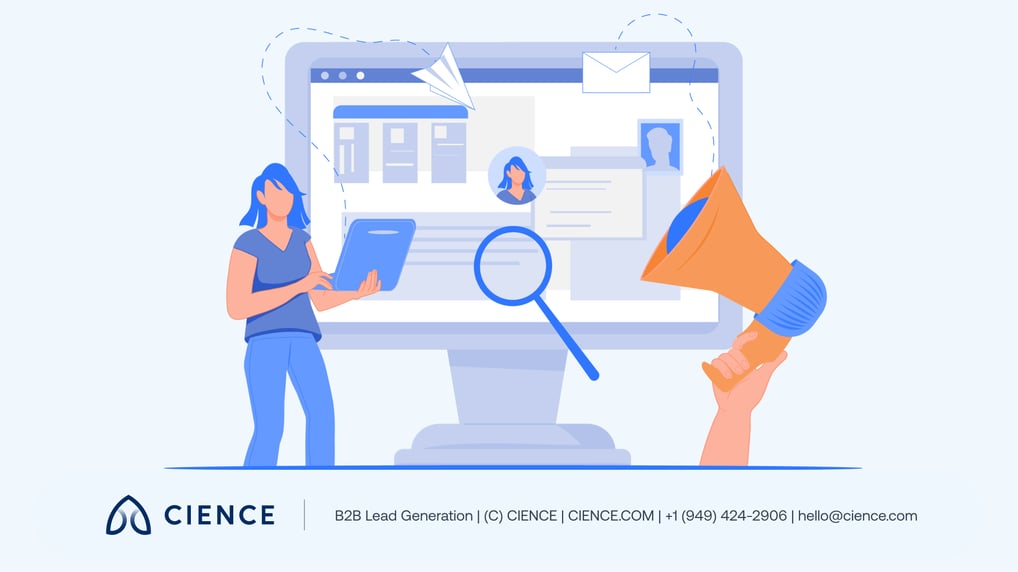Sequences, Cadences, and Waves
A Sequence (also known as a Cadence) is a step-by-step plan of prospecting activities pertaining to a potential contact. It’s created as part of a B2B lead generation campaign and carried out by Sales Development Reps (SDRs).
Modern Sales Engagement Platforms and Customer Relationship Management (CRM) tools enable sales teams to build, test, run, change and analyze a sales Sequence.
Why do campaigns need Sequences?
The decision-makers you reach out to are busy people with lots on their plate. They routinely receive hundreds of emails per day, dozens of calls, and see plenty of marketing messages across the web. It is fair to say they are likely distracted from your outreach. It’s also hard to stand out from this noise.
That’s why back in 2010 it took 4.7 touches and by 2015 that number was up to 6 to generate a sales meeting. According to the recent research by Rain Group, it takes 8 touches on average now.
In other words, just sending a single cold email or making a cold call isn’t enough. You need to persistently yet gently stay in front of prospects to position your value proposition to get through the information cacophony that surrounds decision-makers.
The prospecting sequence provides a necessary framework for such activities.
Here’s an example 8-touch Sequence:
Day 1. Email sent.
Day 1. Phone call.
Day 3. Email sent.
Day 6. A message via LinkedIn sent.
Day 7. Phone call. A voicemail is sent.
Day 9. Email sent.
Day 9. Phone call.
Day 14. Email sent.
Advantages of Prospecting Cadence:
- Work automatization. SDRs know exactly what they should be doing and when.
- Better control. Managers obtain clear KPIs on SDR activities.
- Experimentation. Sequences provide an additional opportunity for A/B testing.
- Multichannel outreach. You can manage more channels more efficiently.
- Scaling and predictability. Once you gain good results you can use the sequence in other campaigns.
Prospecting Sequences at CIENCE:
Being the top B2B lead generation company, CIENCE is constantly experimenting with new opportunities to improve our strategies and techniques. Recently, we added more channels in our campaigns making our sales cadences more complex and efficient.
Apart from classical email, phone call, and social network steps, CIENCE prospecting sequences also include the following touchpoints:
- Landing page
- Display ads
- Offline
Building Prospecting Sequences
There are plenty of blog posts on the Internet that claim to provide the ultimate formula for a cadence that works across all industries, company sizes, and locations. The truth is it’s just another attempt to create a one-size-fits-all model.
However, in our opinion, such attempts contradict one of the key advantages of Cadences, i.e., the opportunity to experiment and test various approaches and techniques.
Tips:
- Look for industry examples;
- Diversify touchpoints by applying multichannel;
- More than 20 touches are too much; and
- Practice A/B testing.

Waves
People sometimes confuse Waves and Sequences because both are in essence the sequences of ‘touches’ of a prospect. Waves, however, apply only to emails. That’s why they’re almost always part of a Cadence.
As before, sending one email isn’t enough because your addressee can easily miss it while checking her or his inbox. Alternatively, the subject line your copywriter wrote doesn’t attract the attention of a decision-maker.
That’s why you’ll need to send more than one email until the prospect finally opens/replies to it or until you reach the limit of touchpoints per prospect.
Waves are created in a Sales Engagement Platform / CRM and are sent automatically.
Here’s an example:
Monday - Wave 1. An SDR loads 35 leads into their CRM and initiates a send-out with email text, the first wave.
Four of 35 prospects open and respond to the email. They’re automatically removed from the other Waves of the Sequence (benefits of using the right tools).
Thursday - Wave 2. The second Wave (with a different body and subject line) is sent to the remaining 30 prospects who didn’t respond to the email from Wave 1.
Two prospects respond to emails and are automatically removed from the Sequence.
Monday - Wave 3. The SDR sends emails of the third Wave to 28 prospects.
Three respond to them and leave the Sequence.
Thursday - Final Wave. 26 prospects receive the final email. One more respond for a total of 10 responses. The Sequence stops.
The period of time between the waves can vary depending on the sequence, industry, company size, product, etc. It is generally a good idea to space Sequences equidistantly.
SDRs usually use touchpoints via other channels (e.g., phone calls, LinkedIn messages, display ads) between email Waves to amplify outreach.